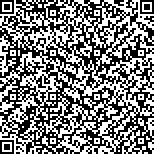| 引用本文: |
-
张君,江顺达,李秀芝,李雪松,卢波,黄俊,刘军,彭立新.参环毛蚓(Amynthas aspergillum)基因组测序及其特征分析[J].广西科学院学报,2024,40(4):446-458. [点击复制]
- ZHANG Jun,JIANG Shunda,LI Xiuzhi,LI Xuesong,LU Bo,HUANG Jun,LIU Jun,PENG Lixin.Genome Sequencing and Its Characteristics Analysis of Amynthas aspergillum[J].Journal of Guangxi Academy of Sciences,2024,40(4):446-458. [点击复制]
|
|
| |
|
|
| 本文已被:浏览 397次 下载 293次 |

码上扫一扫! |
| 参环毛蚓(Amynthas aspergillum)基因组测序及其特征分析 |
|
张君1, 江顺达1, 李秀芝2, 李雪松2, 卢波2, 黄俊2, 刘军1, 彭立新2
|
|
|
| (1.广西壮族自治区国有七坡林场, 广西南宁 530031;2.广西科学院生物科学与技术研究所, 非粮生物质能技术全国重点实验室, 国家非粮生物质能源工程技术研究中心, 广西南宁 530007) |
|
| 摘要: |
| 参环毛蚓(Amynthas aspergillum),俗称广地龙,是中国广东与广西地区广泛分布的蚯蚓(Earthworm)物种,具有重要的药用价值。本研究采用流式细胞术与高通量测序方法对参环毛蚓基因组进行分析,测算出其大小、重复序列、杂合率和GC含量等,并利用生物信息学对基因组进行预测、注释和基因家族鉴定。结果表明,参环毛蚓基因组大小约1 Gb,通过从头组装二代测序数据,获得全长为765.69 Mb的Contig序列,组装成单倍体基因组641 Mb左右。其中,重复序列为386.28 Mb,占全长的50.42%,GC含量为40.34%,杂合率为1.68%,表明参环毛蚓基因组具有高重复、高杂合等特征。该基因组共预测到27 864个基因,其中99.04%基因能在功能数据库中找到注释,较多基因富集于信号转导(Signal transduction)、内分泌系统(Endocrine system)及与传染疾病(Infectious disease)相关功能上。通过对巨蚓科(Megascolecidae)所属物种的线粒体组的分析,蚯蚓种内的遗传距离(p-distance)有着较宽的分布(0-15.1%),其中壮伟远盲蚓(A.robustus)显示最大的种内遗传距离(15.1%),其次是Duplodicodrilus acinctus(13.6%)与Pheretima kutamaensis(10.9%),而参环毛蚓种内遗传距离为1.9%。不同物种间的遗传距离计算结果表明,参环毛蚓与加州腔蚓(Metaphire californica)的遗传距离(16.0%)最小,其次是标记远盲蚓(A.masatakae,16.2%)与壮伟远盲蚓(16.2%),以上4个物种同属于广西区域广泛分布的蚯蚓物种。根据核基因组的数据,参环毛蚓与通俗腔蚓(M.vulgaris)、皮质远盲蚓(A.corticis)的遗传距离分别为15.64%、20.03%,而通过线粒体基因组计算的遗传距离分别为21.00%与19.80%,提示无论是基于形态和解剖特征的传统分类学,还是基于线粒体谱系的分类,在单独使用时均有一定的局限性,因此全面厘清蚯蚓物种间的进化历程需依赖更多的核基因组数据。本研究为参环毛蚓全基因组的精细测序、遗传多样性保护和人工选育等研究奠定基础。 |
| 关键词: 参环毛蚓 基因组分析 基因组大小 基因组特征 |
| DOI:10.13657/j.cnki.gxkxyxb.20241226.009 |
| 投稿时间:2024-07-24修订日期:2024-11-11 |
| 基金项目:广西重点研发计划项目(桂科AB21238014)和自筹经费林业科技项目(2023GXZCLK 57)资助。 |
|
| Genome Sequencing and Its Characteristics Analysis of Amynthas aspergillum |
|
ZHANG Jun1, JIANG Shunda1, LI Xiuzhi2, LI Xuesong2, LU Bo2, HUANG Jun2, LIU Jun1, PENG Lixin2
|
| (1.Guangxi Zhuang Autonomous Region State-owned Qipo Forest Farm, Nanning, Guangxi, 530031, China;2.National Key Laboratory of Non-Food Biomass Energy Technology, National Engineering Research Center for Non-Food Biorefinery, Institute of Biological Science and Technology, Guangxi Academy of Sciences, Nanning, Guangxi, 530007, China) |
| Abstract: |
| Amynthas aspergillum,commonly known as the “Guang Dilong”,is an earthworm species widely distributed in Guangdong and Guangxi provinces of China,and has important medicinal value.In this study,the genome of A.aspergillumwas analyzed by flow cytometry and high-throughput sequencing.The genome size,repetitive sequence,heterozygosity and GC content were calculated,and the genome was predicted,annotated and identified by bioinformatics.The results showed that the genome size of A.aspergillumwas approximate 1 Gb.The full-length Contig sequence of 765.69 Mb was obtained by de novo assembly of the second-generation sequencing data,and the haploid genome was assembled into about 641 Mb.Among them,the repeat sequence was 386.28 Mb,accounting for 50.42% of the total length,the GC content was 40.34%,and the heterozygosity rate was 1.68%,indicating that the genome of A.aspergillumhad the characteristics of high repetition and high heterozygosity.A total of 27 864 genes were predicted in the genome,of which 99.04% could be annotated in the functional database,and more genes were enriched in signal transduction,endocrine system and infectious disease.Based on the analysis of the mitochondrial group of Megascolecidae species,the intraspecific genetic distance (p-distance) of earthworms has a wide distribution (0-15.1%).Among them, A.robustus showed the largest intraspecific gap (15.1%),followed by Duplodicodrilus acinctus (13.6%) and Pheretima kutamaensis (10.9%).While the intraspecific genetic distance of A.aspergillum was 1.9%.By calculating the genetic distance between different species,the genetic distance between A.aspergillum and Metaphire californica (16.0%) was the smallest,followed by Amynthas masatakae (16.2%) and A.robustus (16.2%).These four species are all widely distributed in Guangxi.Based on nuclear genome data,the genetic distances between A.aspergillum and M.vulgaris and A.cortices were 15.64% and 20.03%,respectively.However,the genetic distance calculated by the mitochondrial genome was 21.00% and 19.80%,suggesting that both the traditional taxonomy based on morphological and anatomical features and the classification based on mitochondrial lineage have certain limitations when used alone.A comprehensive understanding of the evolutionary history of earthworm species depends on more nuclear genome data.This study provides a foundation for the high-resolution sequencing of the A.aspergillum genome,as well as for research on genetic diversity conservation and artificial breeding.This study lays a foundation for the fine sequencing,genetic diversity protection and artificial breeding of the whole genome of A.aspergillum. |
| Key words: Amynthas aspergillum genome survey genome size genome characteristics |
|
|
|
|
|